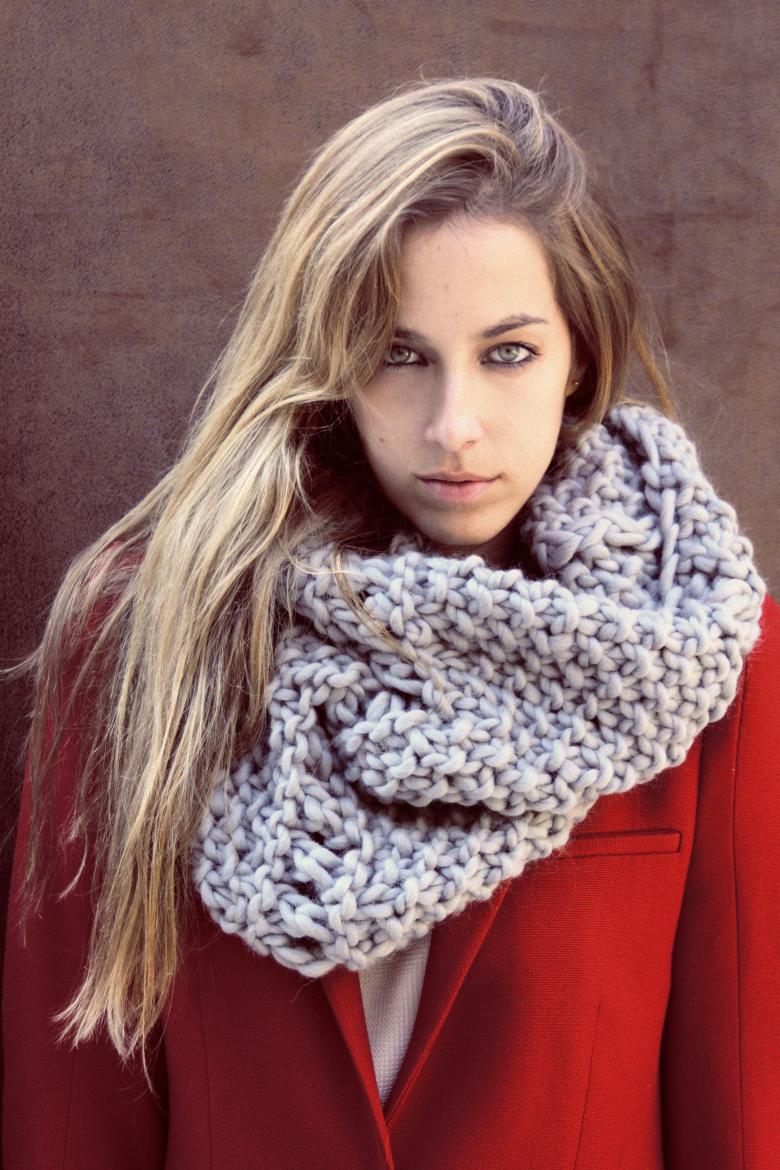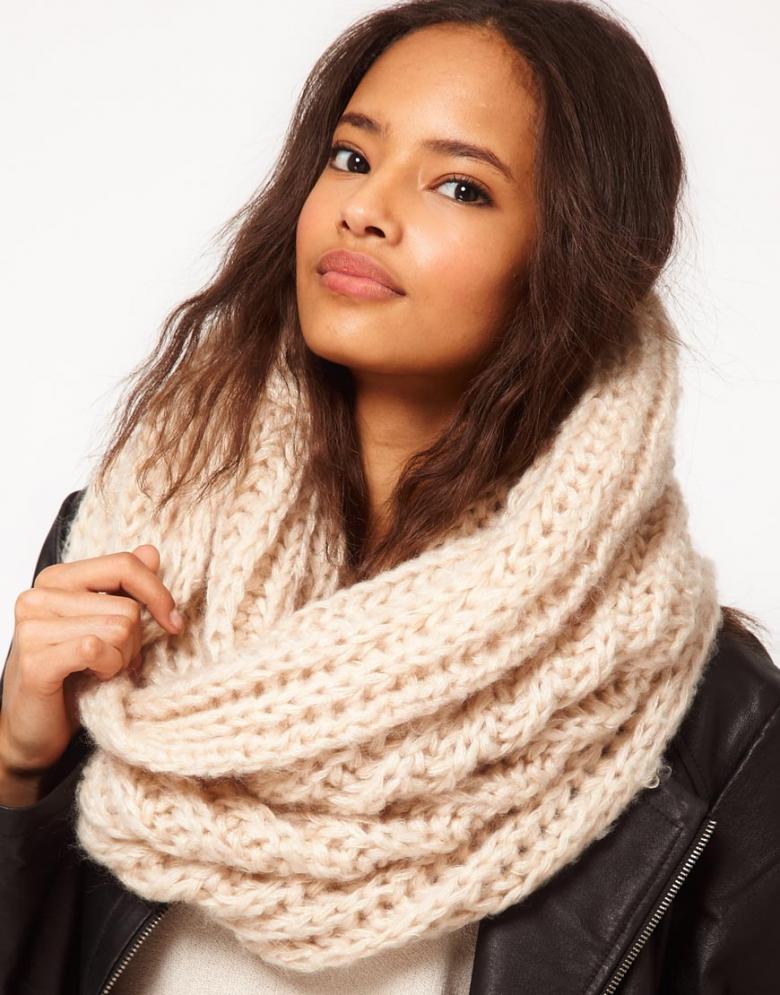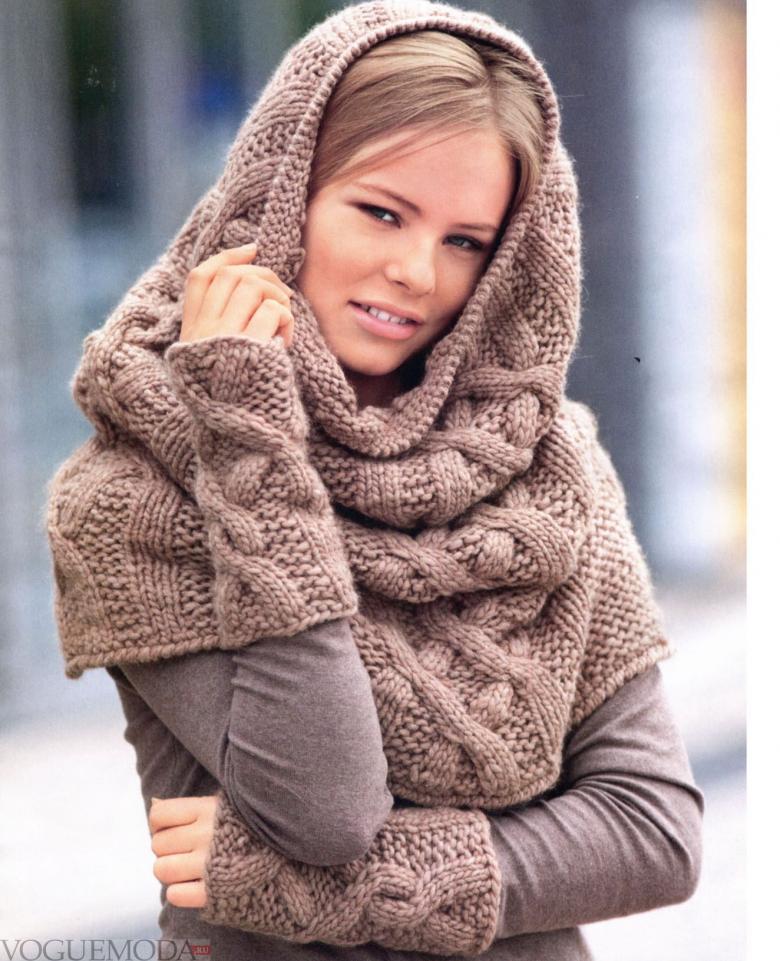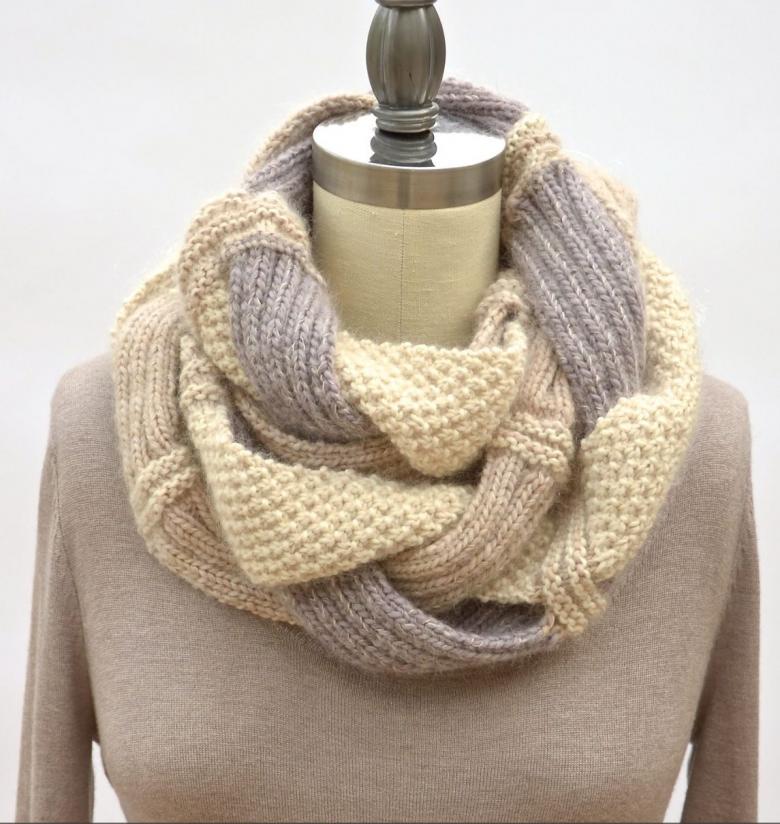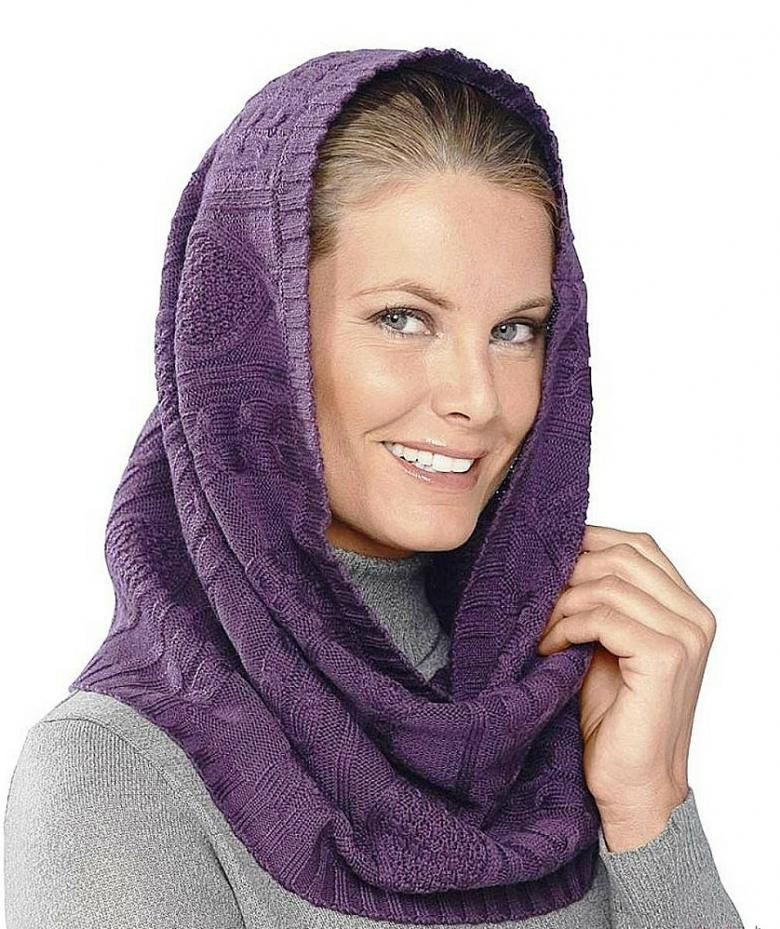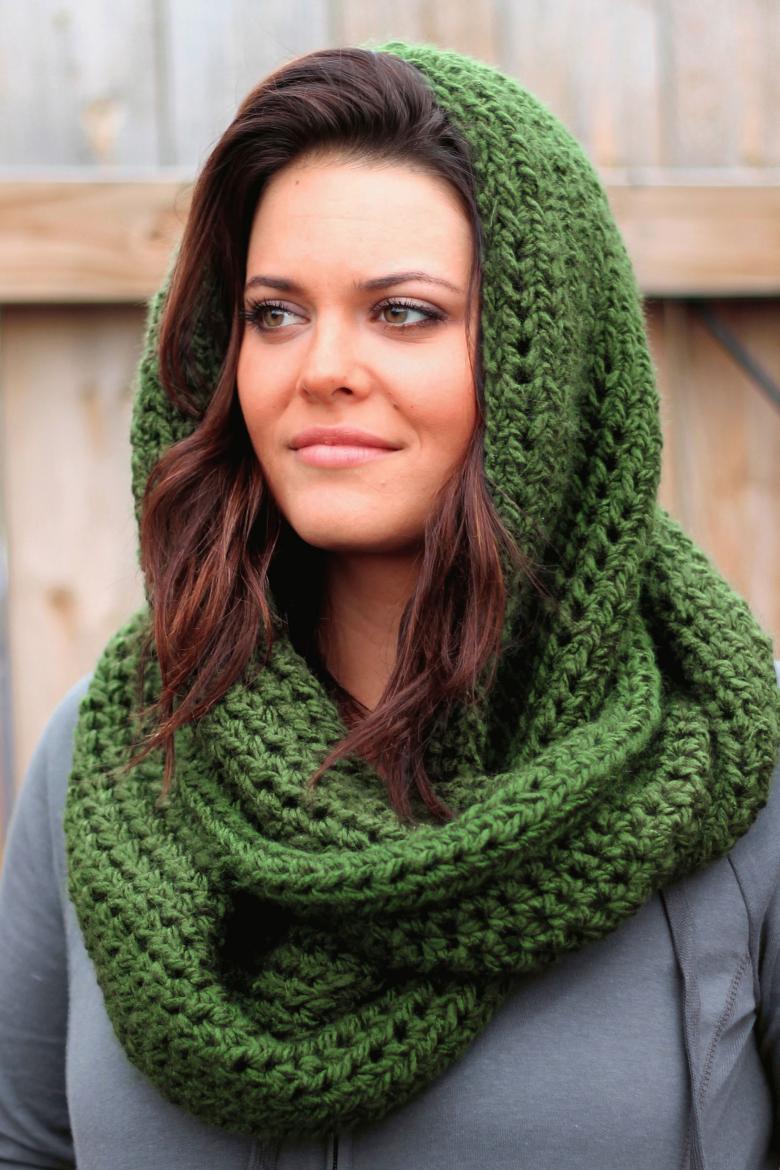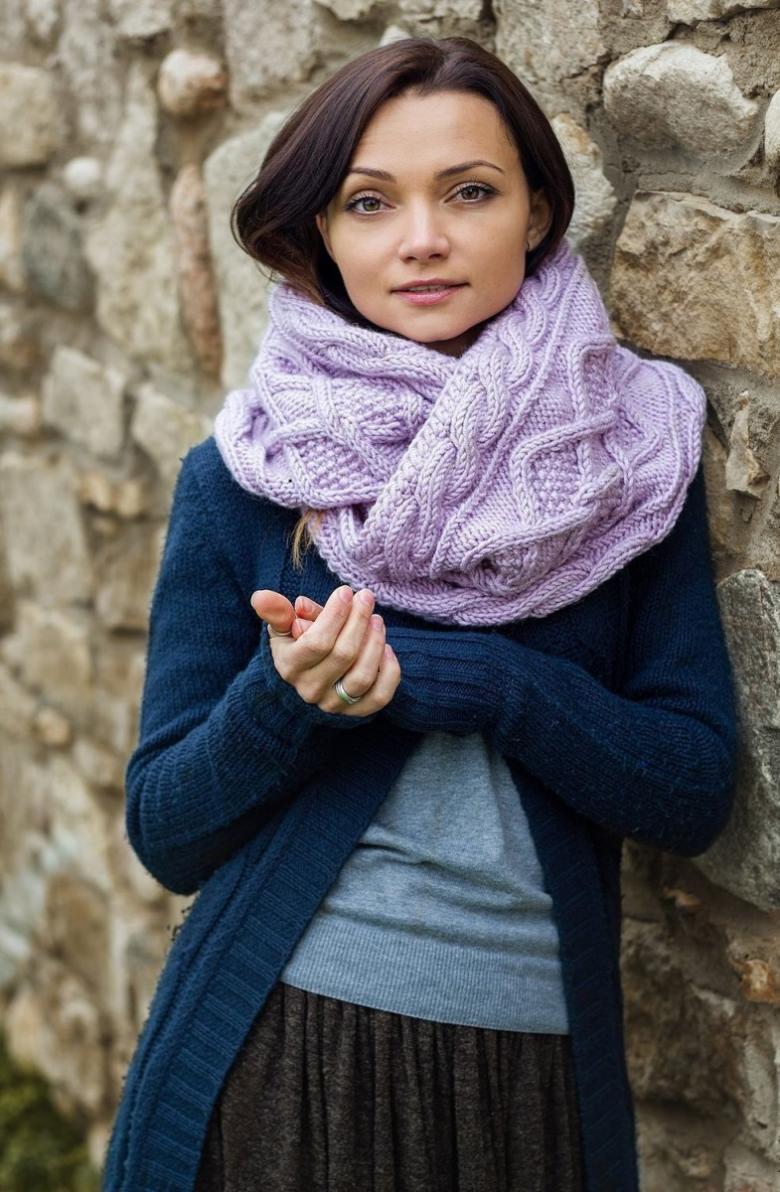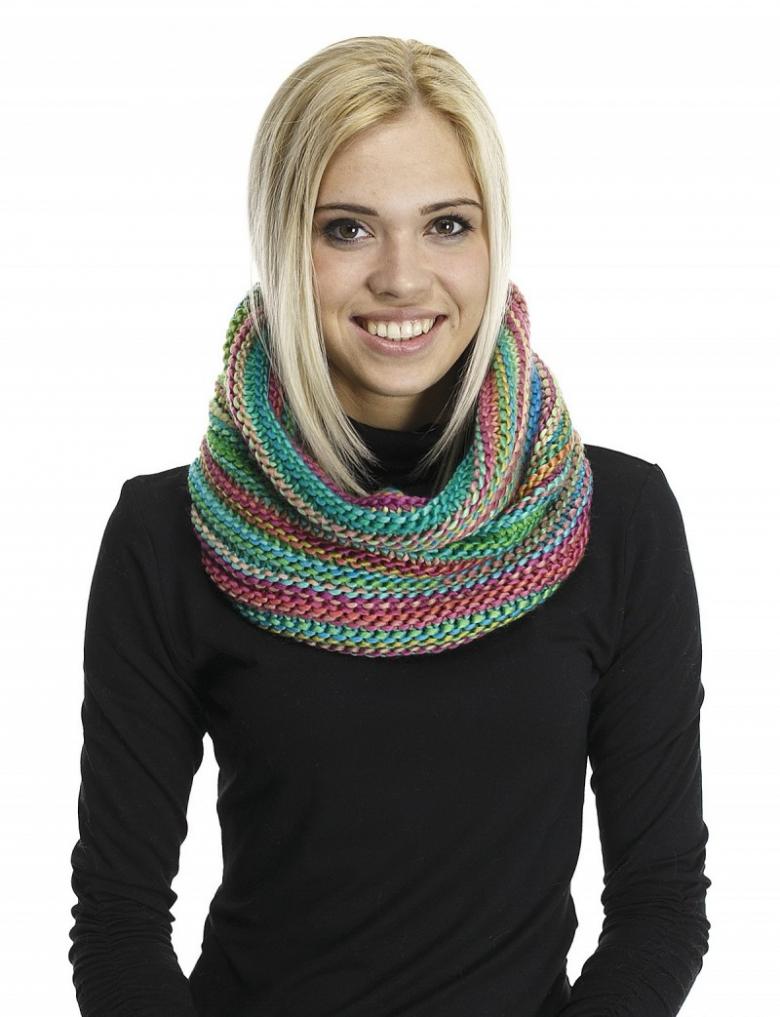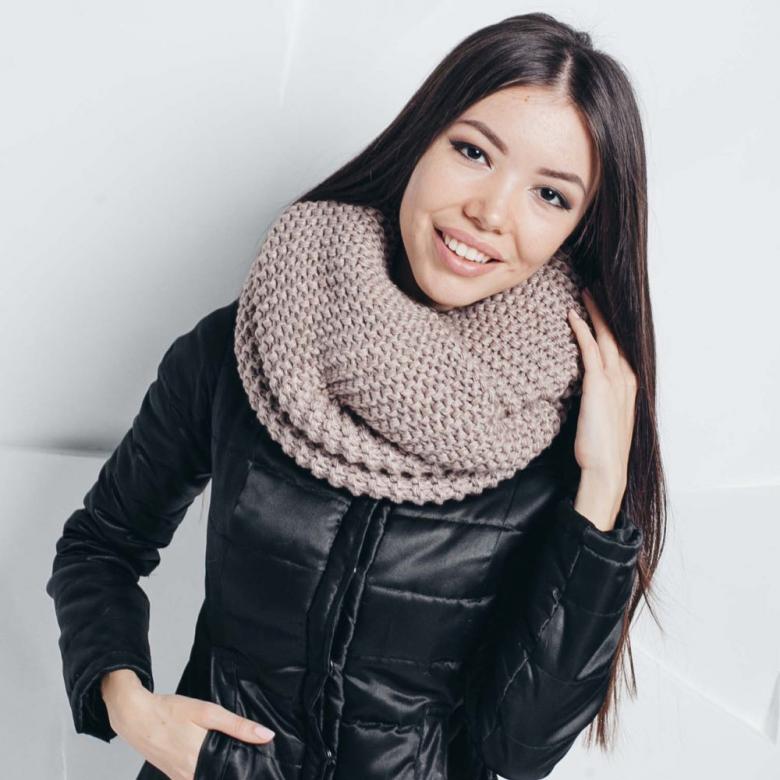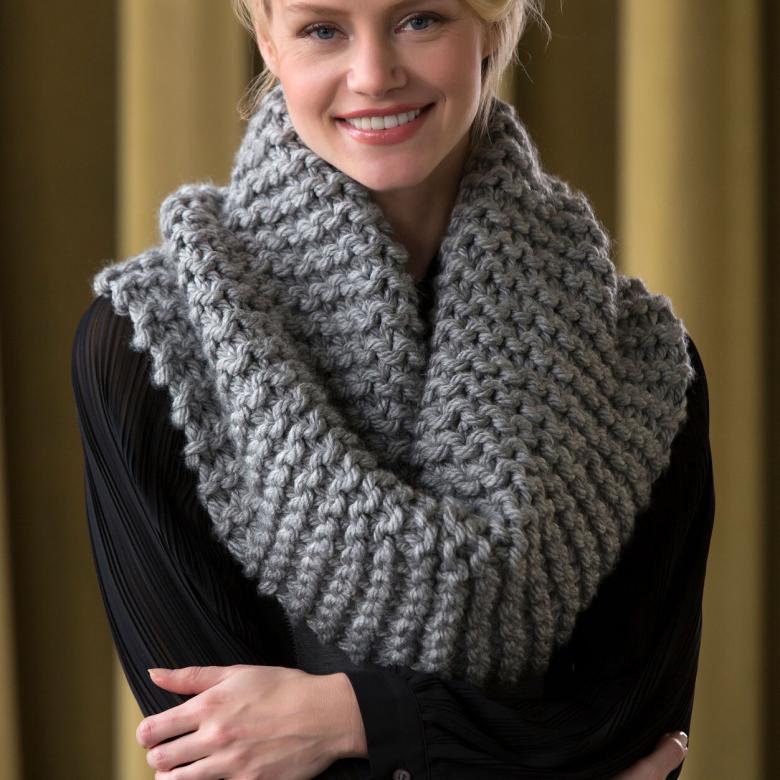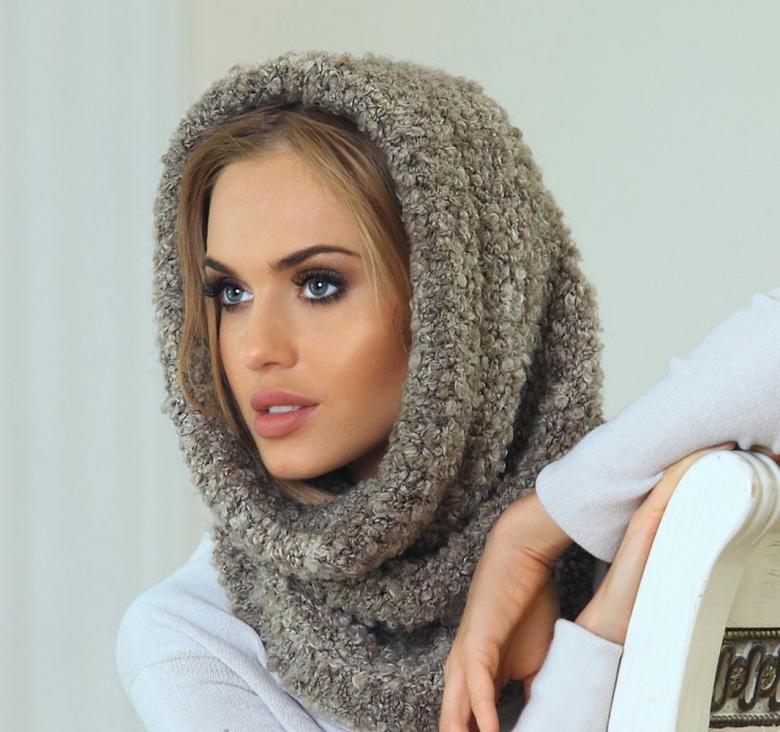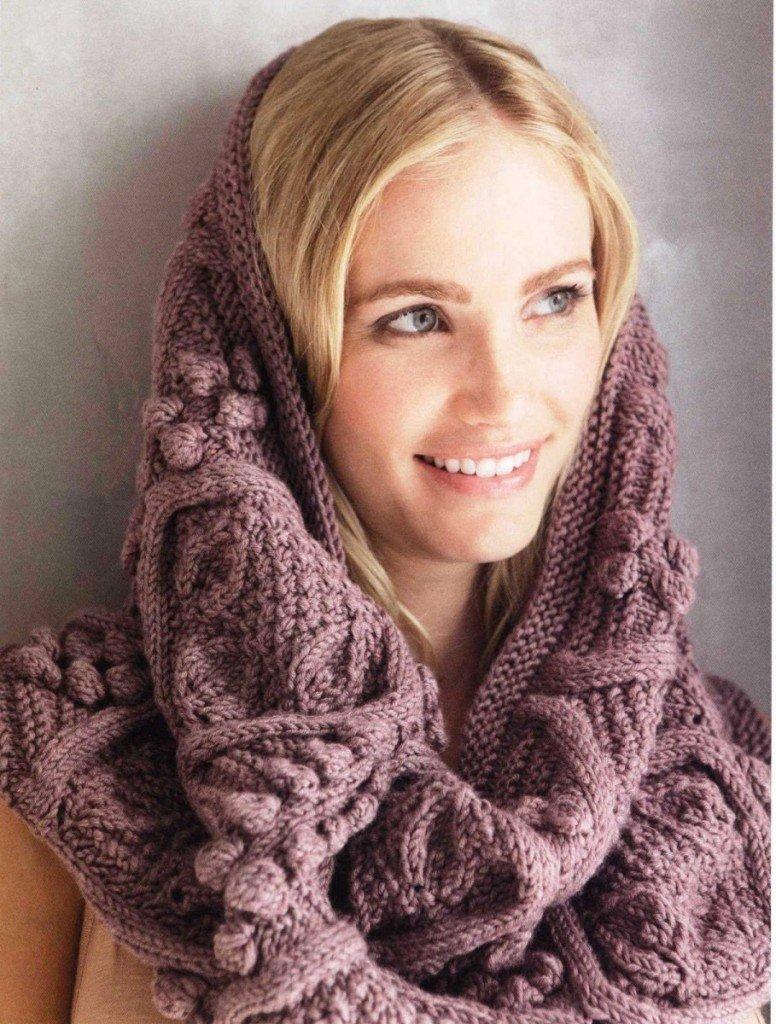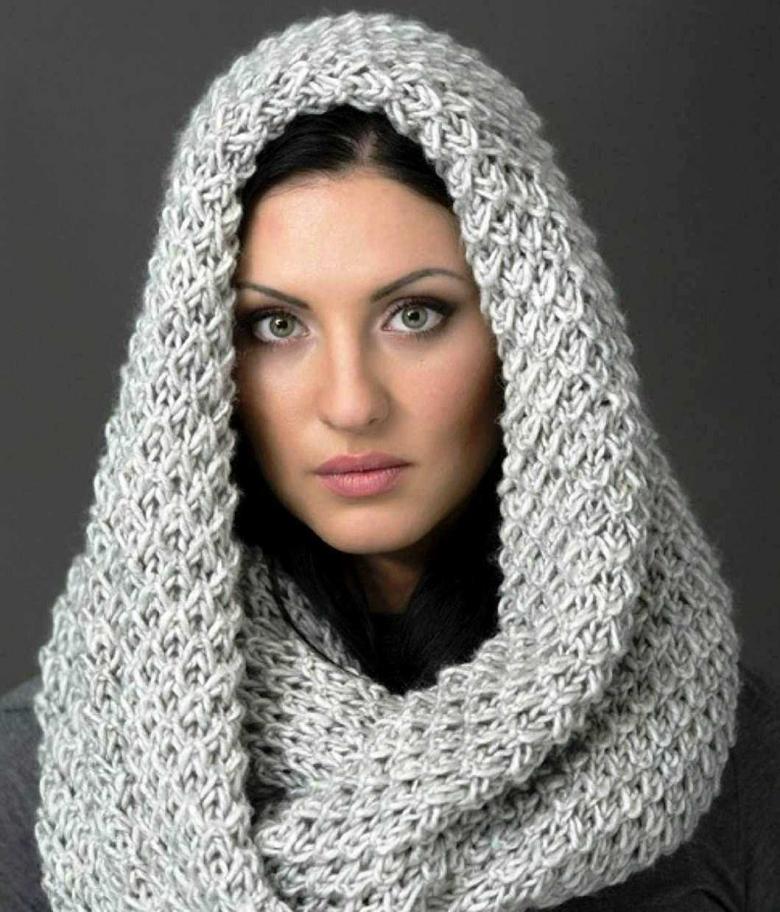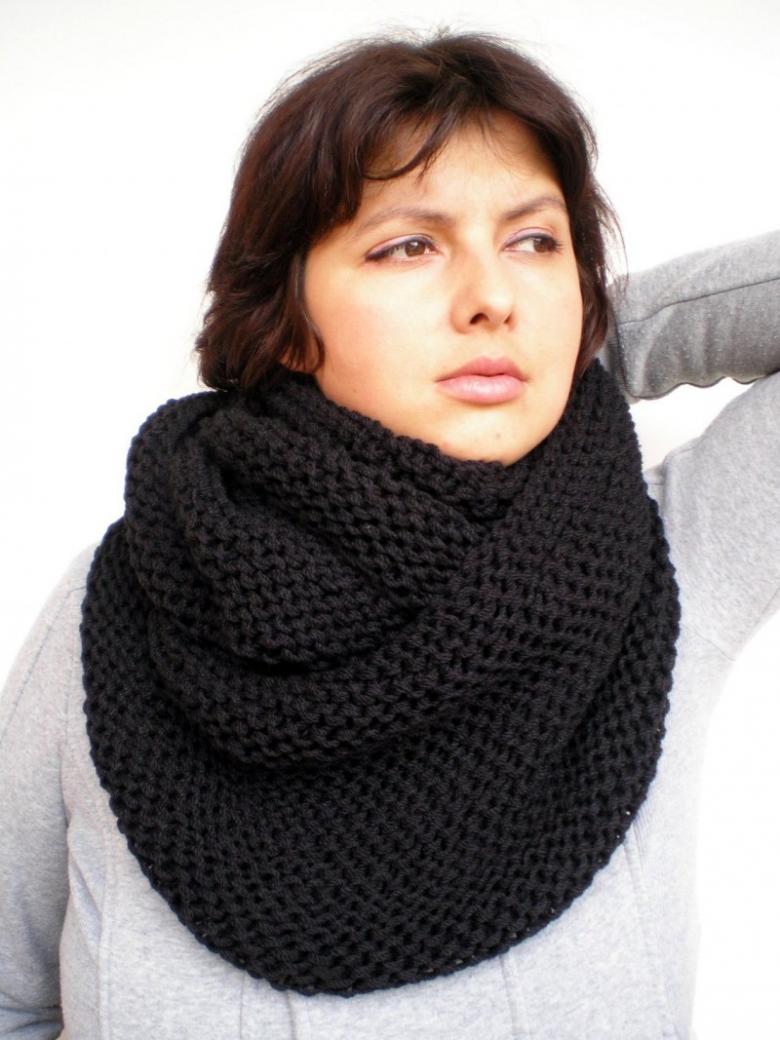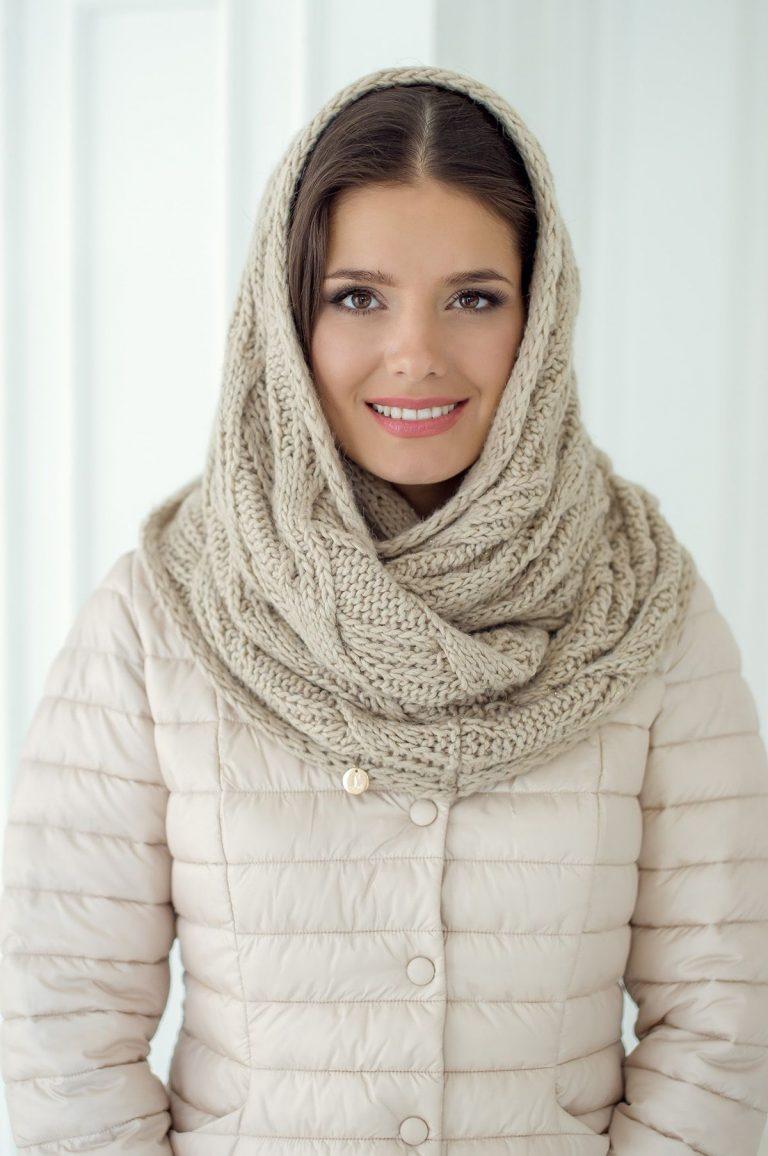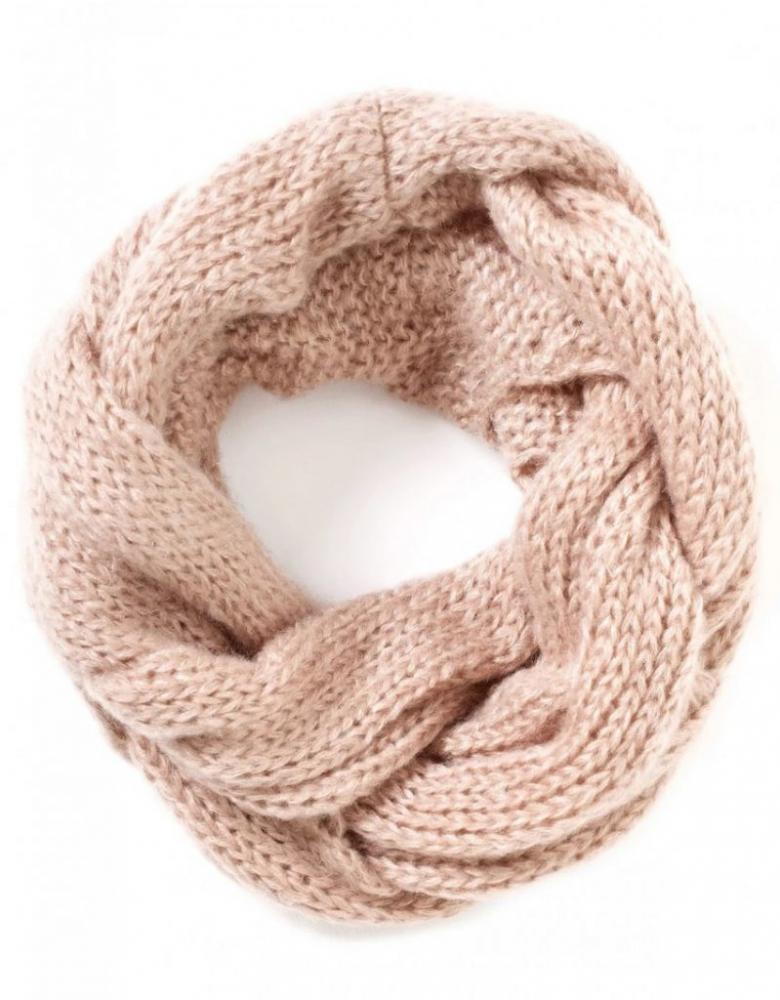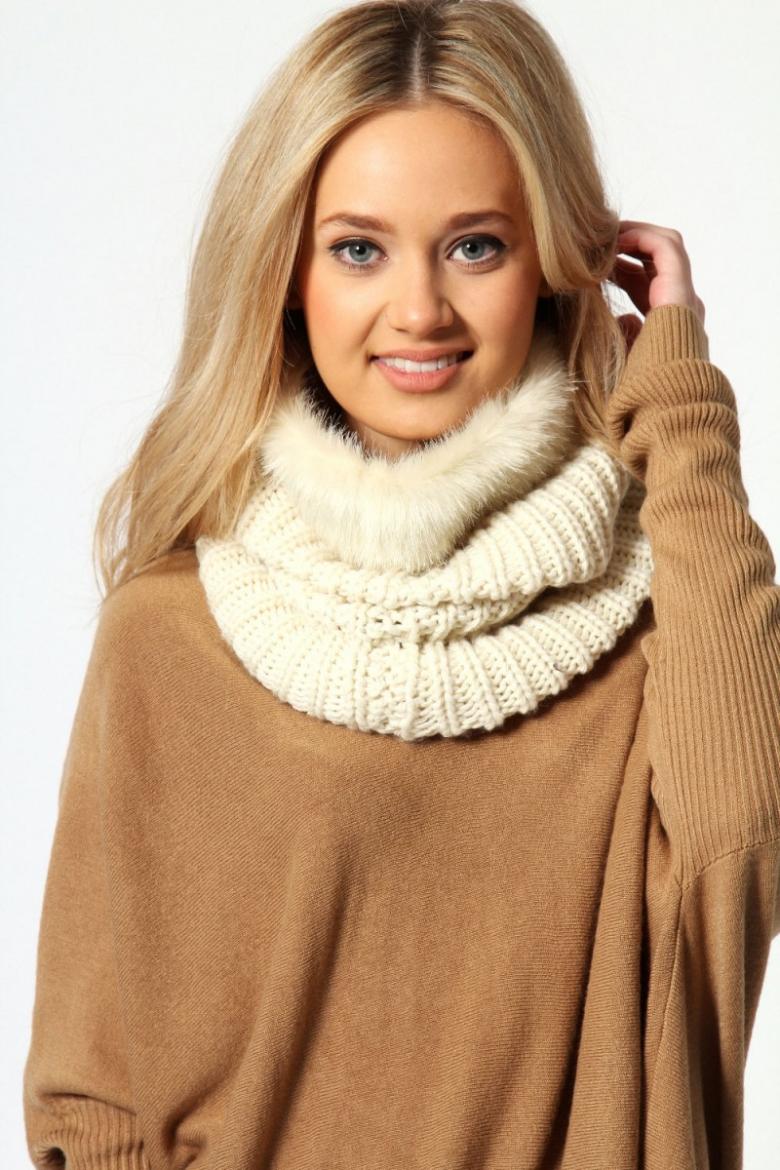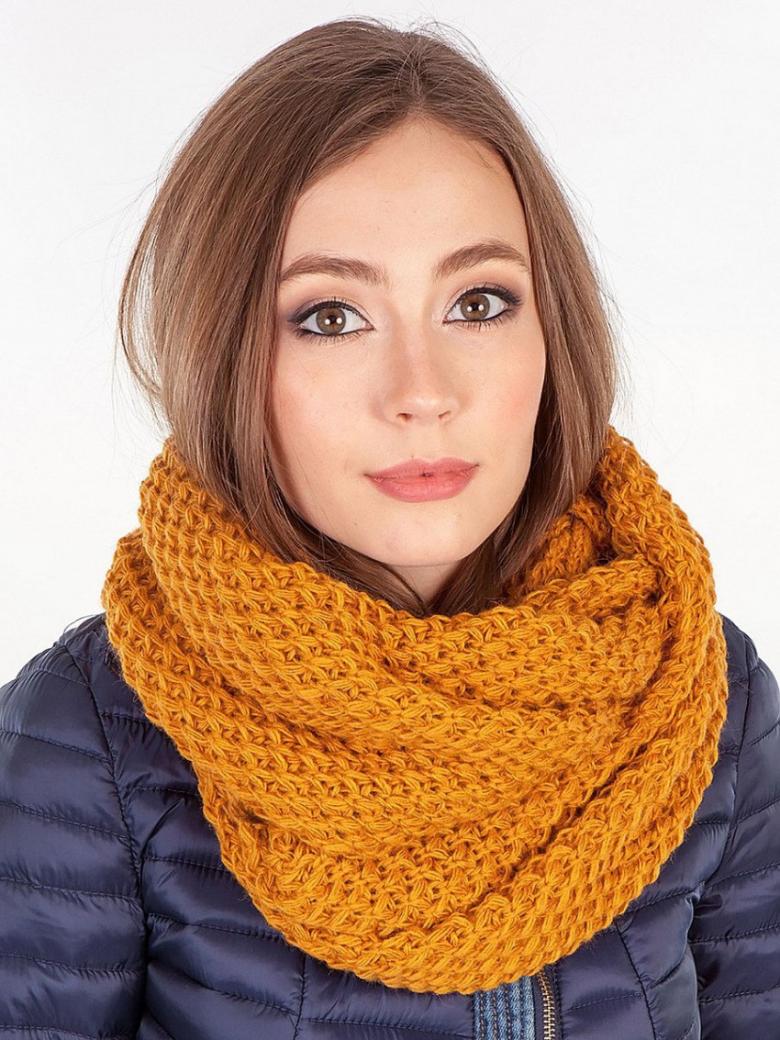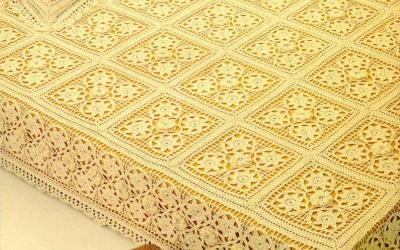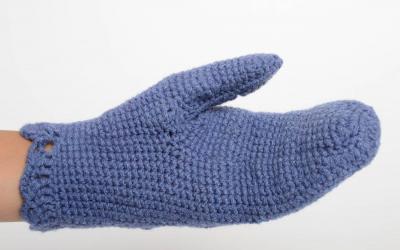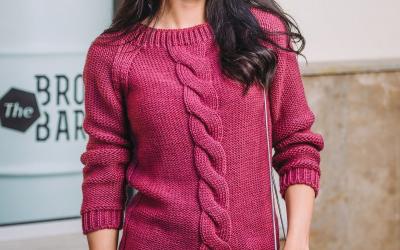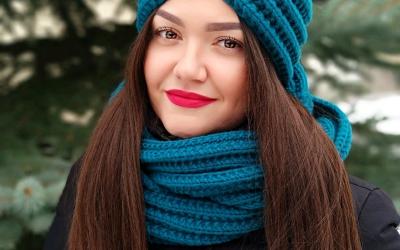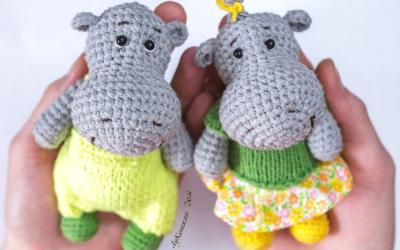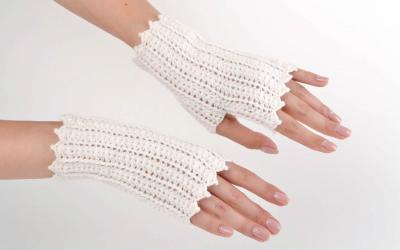How to knit a scarf with a scarf and crochet - description of the knitting scheme, photo ideas, tips
With the onset of cold weather we all want to dress warmer and more fashionable at the same time. Irreplaceable accessory in the closet at this time of year are scarves. The assortment is great, but constant love and popularity is a scarf-hoof. For a year now, this scarf has been happily worn by women, men and children alike.
History of appearance
The original name of the scarf in the form of a pipe - snood (from "snood"), which literally means "leash". Such headwear appeared in the Middle Ages, was a success in the 19th century in America and Scotland, during the Second World War it was worn by women in Britain. Throughout its history, the snood has had different looks, from a ribbon and hairnet to a piece of fabric in the form of a scarf.

But as we know, fashion takes its turns in history and returns in an updated form. Nowadays, with the advent of knitwear, the snood has found new life.
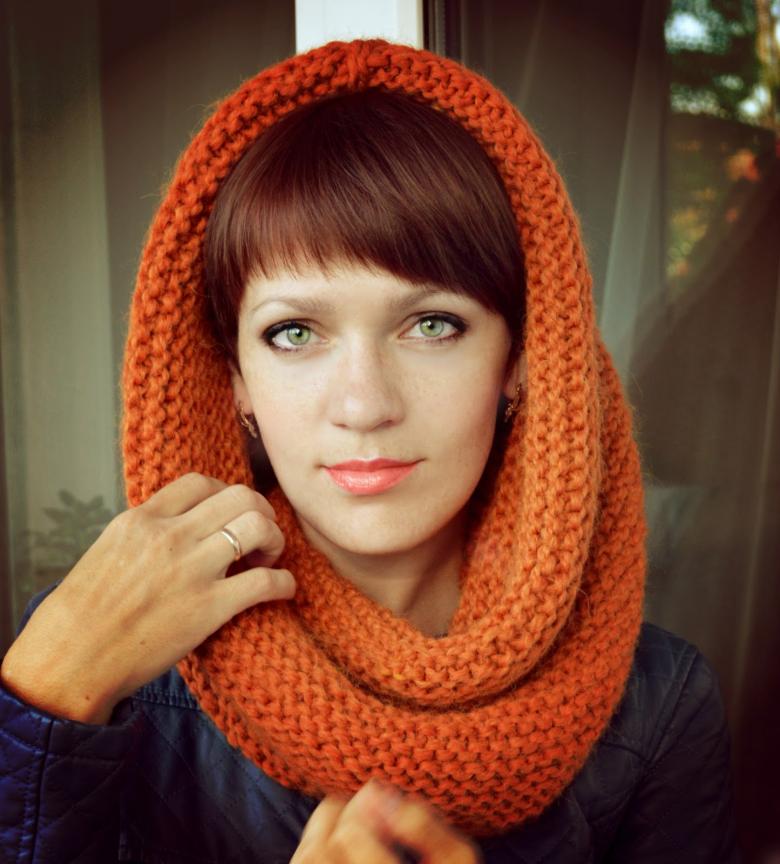
Description and varieties
A snood is a scarf, the ends of which are closed in a ring. It can fit tightly to the throat (to look like a thick sweater collar), once or twice wrapped around the neck, have a button or button fastener.
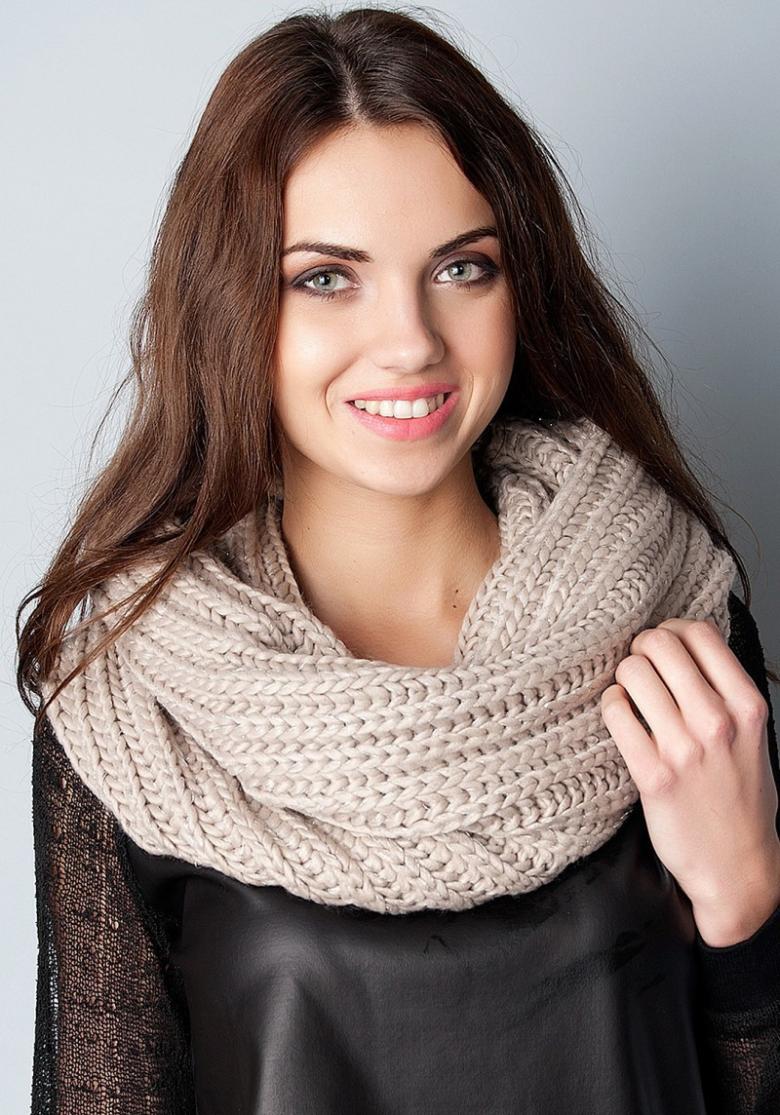
There is a large selection of fashionable scarves on sale. But we are not always satisfied with the quality, color, and we want originality. And why not try to knit a unique model of scarf-hoof with his own hands. To begin with, you need to decide on the choice and consider the options.

Length
- The variant more close to the throat implies a small length of scarves: around the circumference of the neck or slightly longer. They protect well from the wind and are comfortable for children.
- The long version reaches up to 2 m and can wrap around the neck twice or even three times. A long snood scarf allows you to put the second turn on the head and warm the shoulders at the same time.
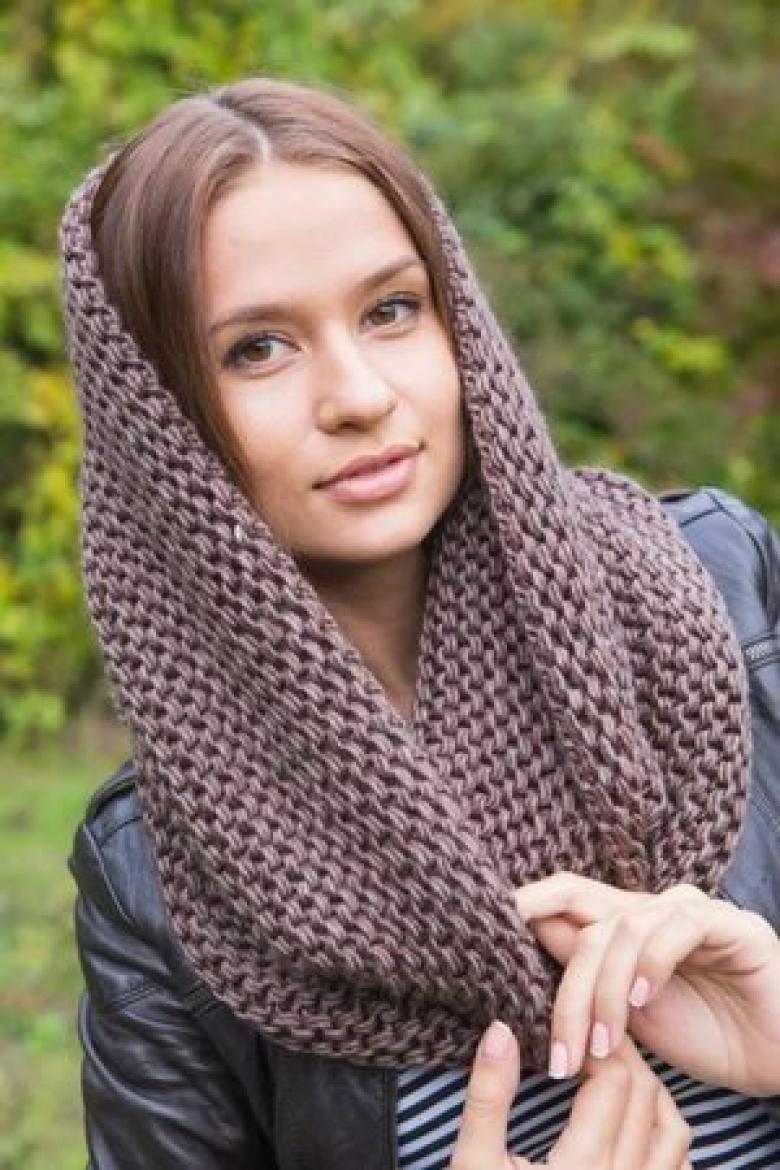
Width
- The choice of width depends on the texture of the threads and the purpose. If you want to have a warm scarf, a width of 35 to 50 cm is better.
- Narrow in width, a scarf of 20 to 35 cm is better made with thin threads for several turns.
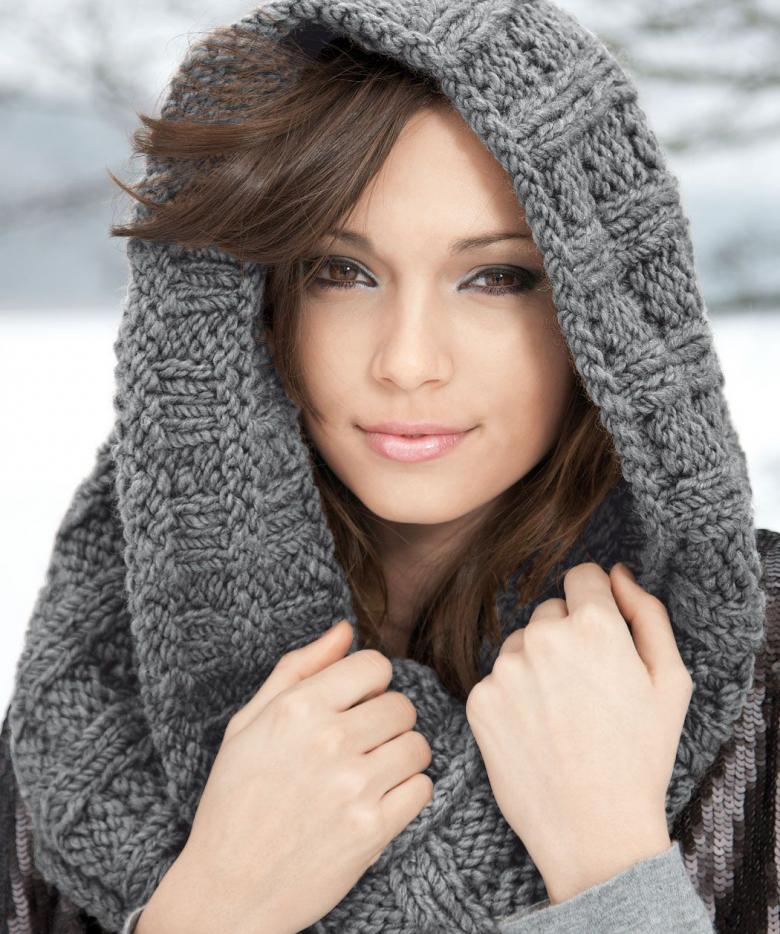
Thread, texture and color
- In needlework stores now there is a large selection of threads, it remains only to choose the desired color and texture of the material. It can be cotton, linen, wool, cashmere, alpaca, mohair.... Threads can be combined, using, for example, wool and mohair. For more comfort, a composition of yarns where 50% wool and 50% other material is suitable.
- The yarn can be a neutral or bright color. The main thing is that it blends in with your basic closet items. Since the scarf is an accessory, you can be bolder with the choice of color.
- A scarf-snood tied with fine threads (cotton, linen, silk) can be worn even in summer. It will create an interesting image in a general set of clothes.
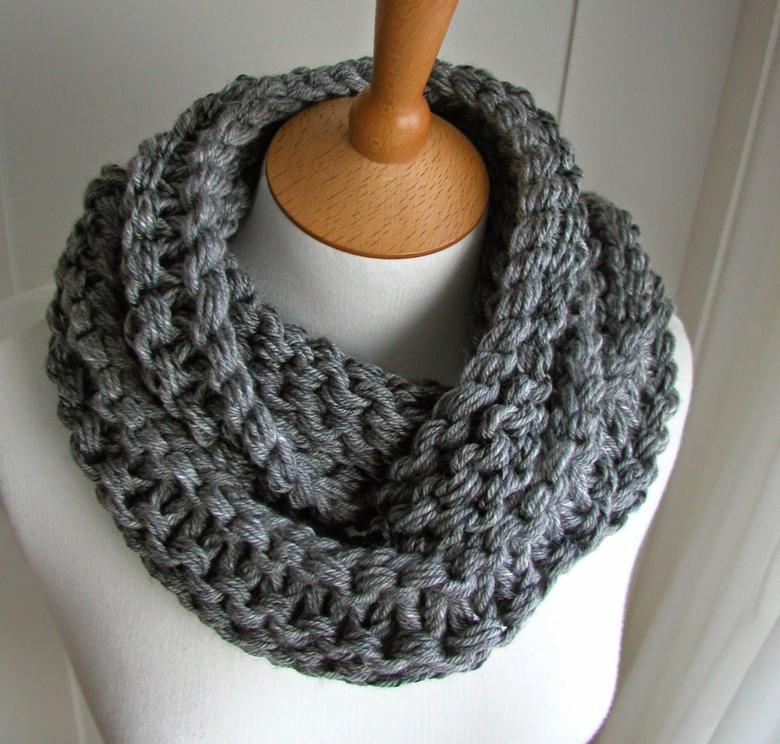
Knitting methods
- Knit a scarf-snood can be on 2 spokes, then at the end of knitting the short ends will need to sew with a needle or crochet.
- You can use circular needles, which eliminates the seam on the product.
- There are also many crochet designs.
- The pattern when knitting can be both the simplest and the most complex: textured, openwork, with ornaments or color transitions, with a terry effect (elongated loops), in the form of a grid.
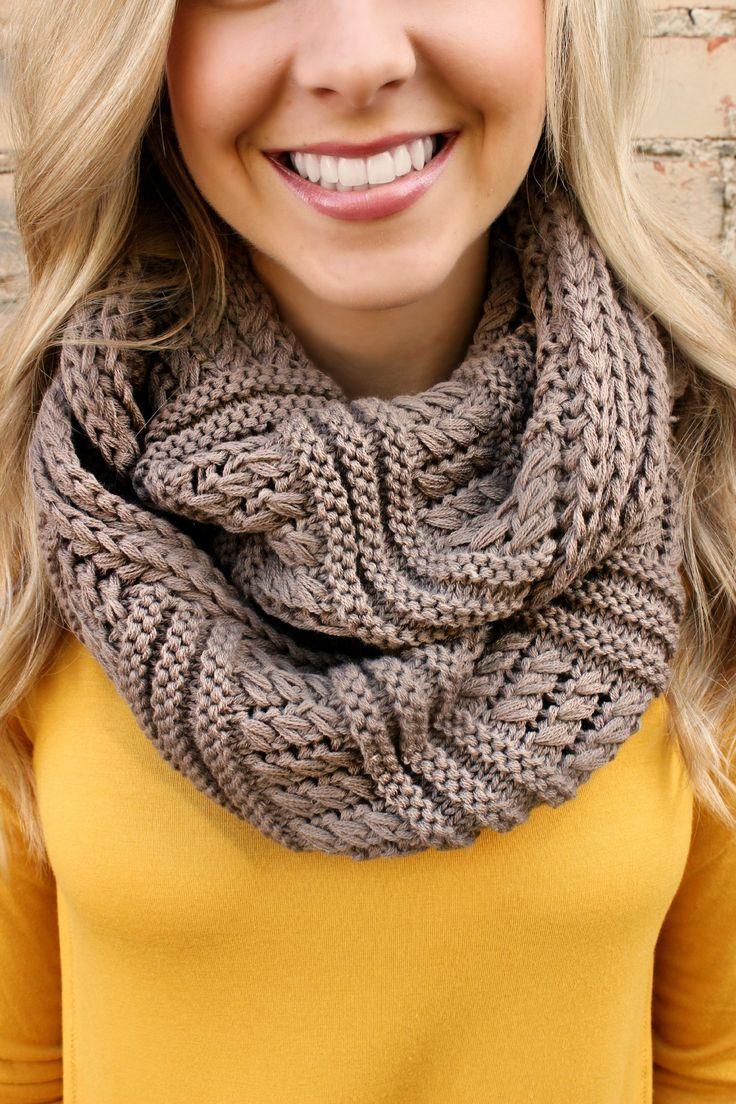
Decorating
- Finished scarf can be decorated along the edge with embroidery, beads, fur, tassels.

Models and description
Scarf-snood, "shawl knit" pattern
- For your first scarf-snood to be sure, it is better to start with a simple shawl knitting, choose thick and soft threads, provide a length of 140-160 cm (for a double turn), a height of 25-30 cm. Such a scarf will turn out more voluminous, plastic and spectacular product. The front and back sides will look the same, which is important for the scarf.
- For the model will need: straight needles N5-8, 250-300 grams of yarn.
- Collect 30-50 loops on the needles, knit with a scarf knit until you reach the desired length.
- At the end of knitting close all the stitches.
- Neatly sew the edges with a needle or crochet.
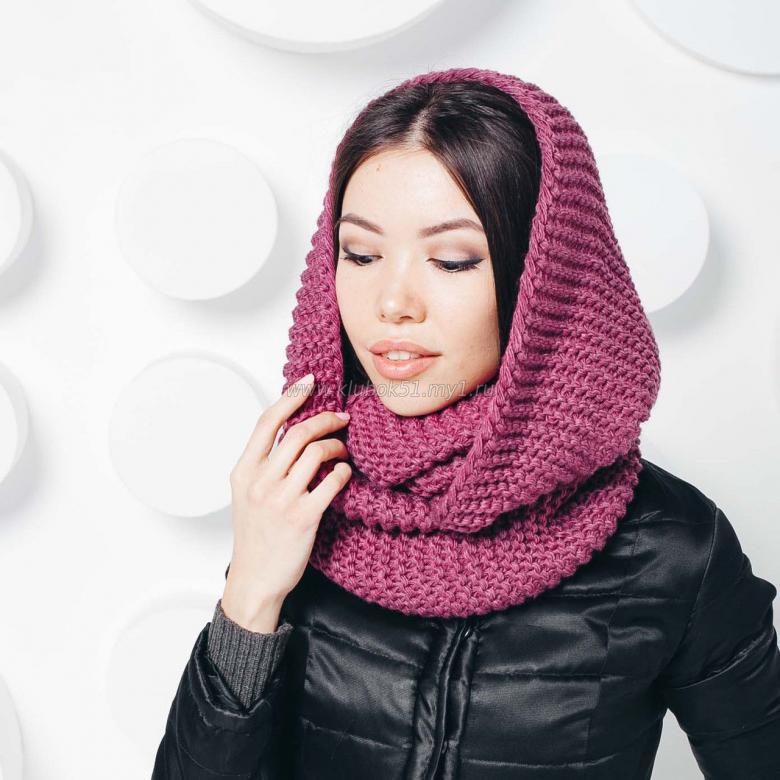
Shawl Knit:
- All rows are knit on the right side.
Please note: if all the loops are knitted behind the back wall, the knitting will be tighter and the product will not be deformed.
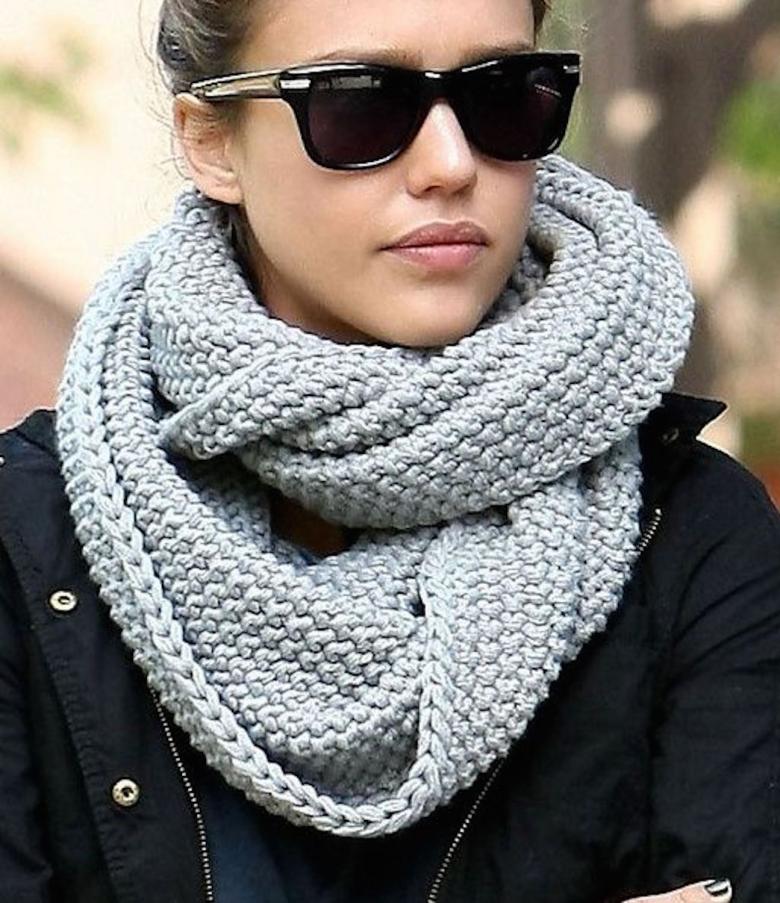
Scarf-snood, "rubber band" pattern
Similarly knit a snood scarf with an elastic band. Numerous types of elastic bands give completeness to the knitted product. English or cut elastic is a good choice. The direction of knitting can be either along or across. When knitting lengthwise (from the short edge), follow the same sequence as the description of knitting a scarf-snood with a shawl knit.

To knit across (up from the long edge):
- On your knitting needles, gather 240-280 loops, knit the first and last 2 rows with a regular 1x1 stitch, and all intermediate rows with an English stitch until the desired height is reached.
- Close the last row.
- Sew the edges neatly with a needle or crochet.
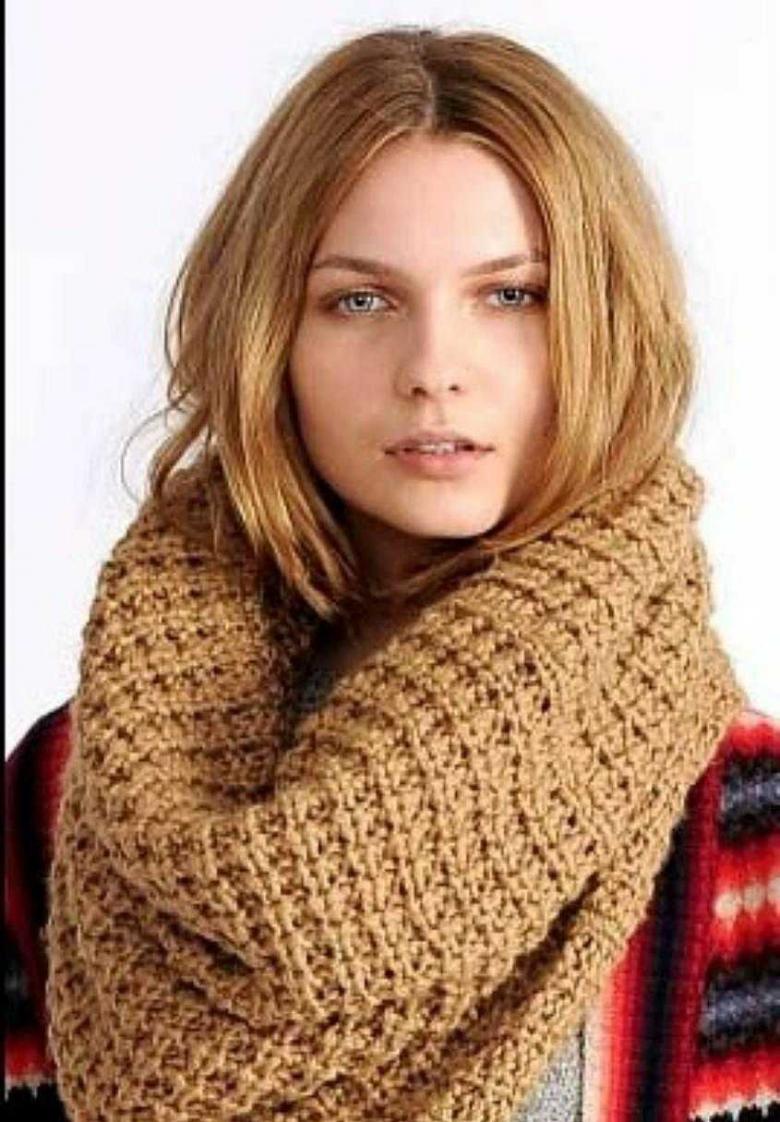
English Stitch:
- The number of loops should be an even number when typing.
- 1st row: *1 obverse, 1 st stitch off with a hook - transfer the thread between the spokes in front of work and cast on the left spokes, then remove this hook and stitch without committing it to the right hand (the removed loop is covered with a kind of a hook).
- Row 2: *Knit the previous row of the removed loop and the cast-off stitch together to the right side. Take the next stitch off the wrong side of the knit.
- Next: knit according to the description of the second row.
Note: The asterisks indicate the repeat of the pattern.
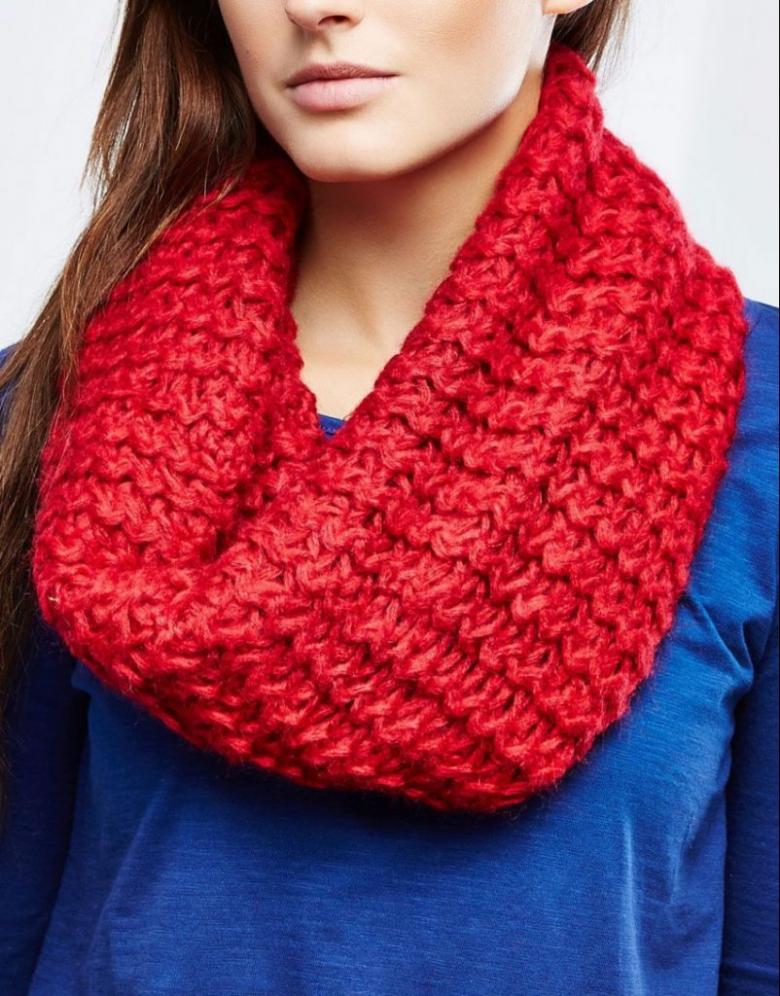
Fringed Rubber Stitch:
- Dial in a number of loops that is a multiple of 3.
- 1st row: *2 straight stitches, 1 stitches off with a needle.
- 2nd row: all stitches are to the right.
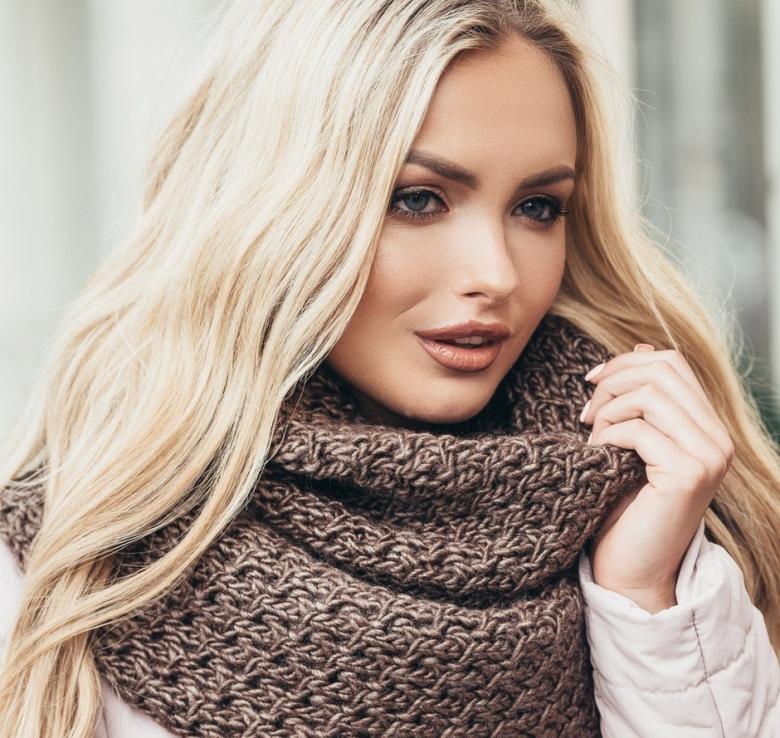
Features of this knitting: you can vary the knitting pattern by increasing the number of right loops between the removed loops, or leave two removed loops between the right loops.
A tourniquet or braid would look good along the edge of the cut elastic.
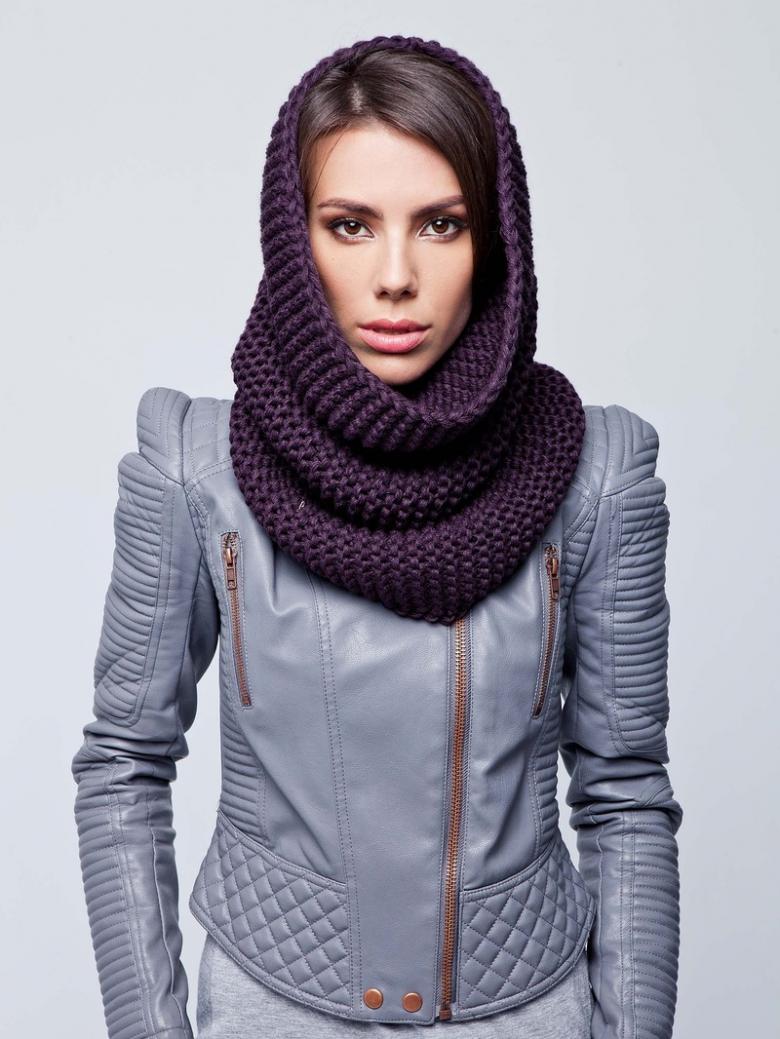
Snoed scarf, "rice" pattern
The "rice" pattern is very easy to do, will provide the same look on both sides of the product, and the fabric will not curl.
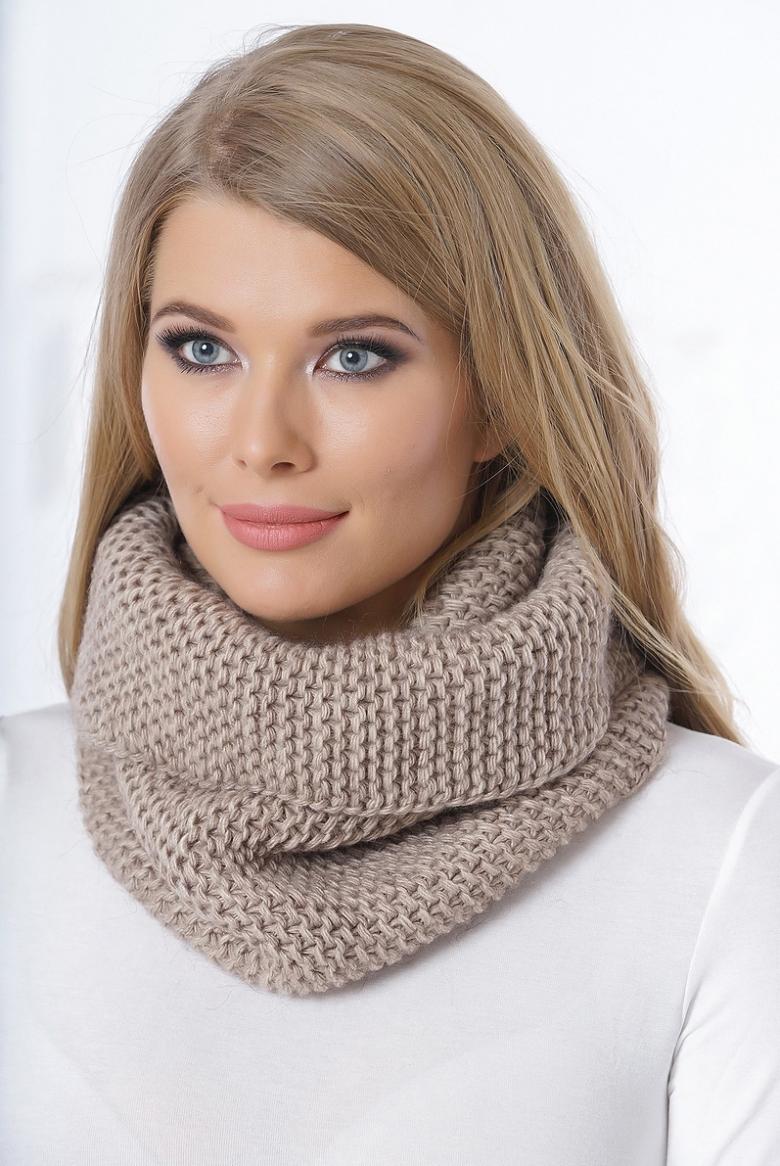
"Rice":
- Tie a pattern to calculate the loops.
- For one turn the circumference of the scarf should be about 80 cm, for two turns - twice as much.
- Dial in an even number of stitches.
- 1st row: * 1 obverse, 1 wrong.
- The 2nd row and all others: * 1 obverse, 1 needle *.
Above the right loops, the wrong loops are knit, and above the wrong loops, the right loops are knit.
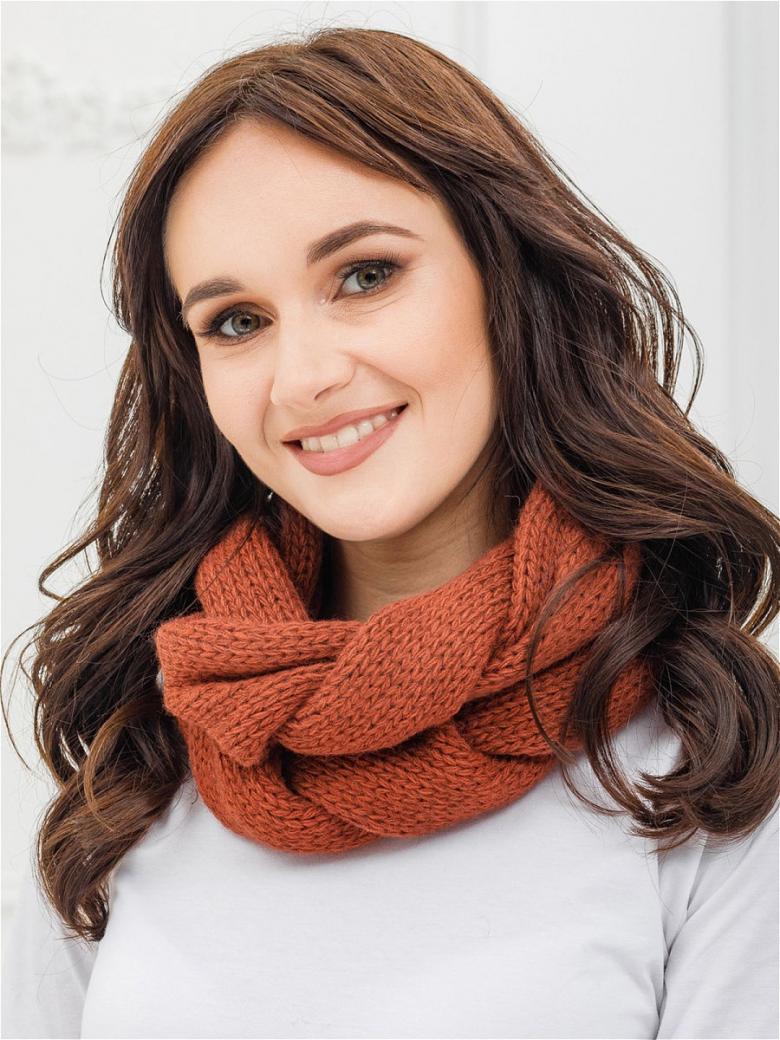
Scarf-snood, openwork knit
For a more romantic look, from light and delicate colors, you can knit a scarf with a openwork pattern. This is a more complicated technique and requires more attention and time. But the result is worth it. Such a product looks expensive and exquisite. It can be worn both with outerwear and with a dress.

English openwork (in the form of a net):
- Tie a pattern to calculate the loops.
- One turn of 70-80 cm will be suitable for a fishnet scarf-snood, but in height you can make it a little more - 40-50 cm, for a beautiful drape.
- Dial in an even number of loops.
- All odd-numbered rows: all stitches are back to back.
- All even rows: *Neck, take 1 stitch off to the right, take 1 right, close the removed stitch over the stitch you just took.

Two-color scarf-snood
For this scarf, use different colors of yarn that blend together. You can knit half of the scarf in one color, half in another, or alternate evenly in stripes. The knitting pattern is whatever you like. Especially good look model made of cotton, viscose or linen threads.
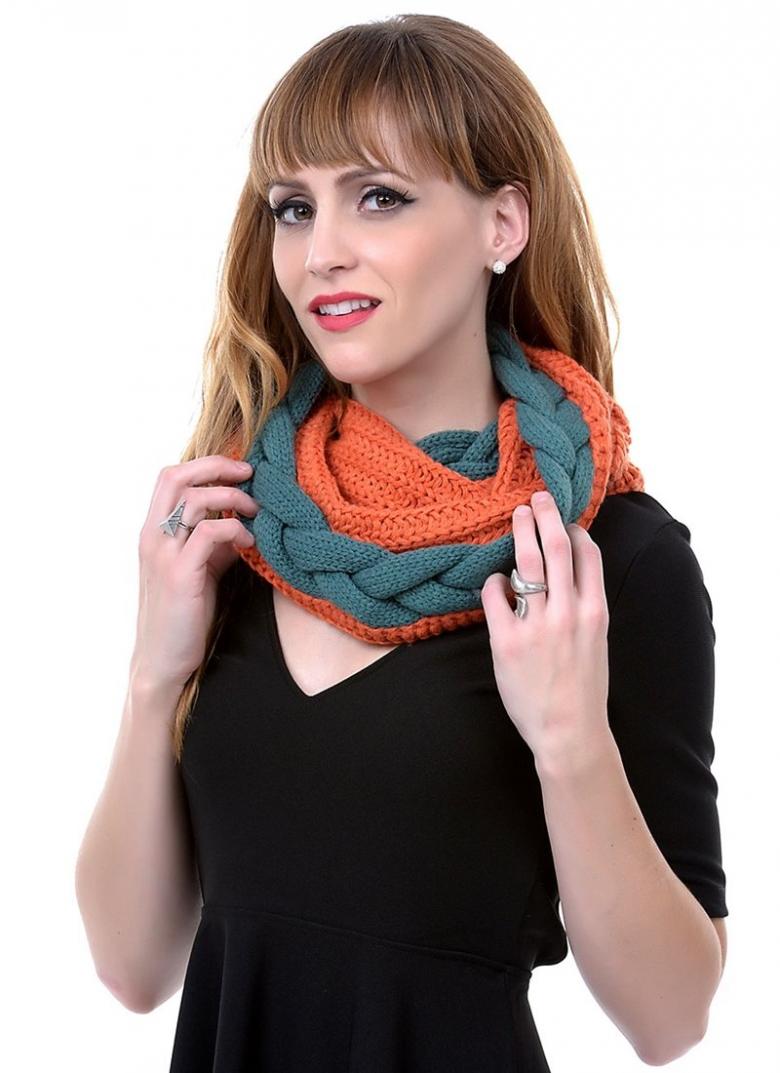
Scarf-snood with ornament
The variant of the scarf with an ornament requires skill. For it you will need threads of several colors. The pieces can be arranged as throughout the entire fabric, or as separate elements. It is better to find a suitable scheme in a magazine or on the Internet and strictly follow it. Pre-calculation of loops in height and width should be more careful, because the pattern of the ornament must match exactly.

The fashion world offers many ideas for knitting a snood scarf, using different techniques and levels of skill. This cozy and beautiful product will be a good gift for family and friends. Try to think up and create your own unique model. You are sure to succeed!



